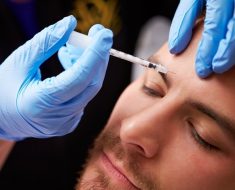Arthritis is a common cause of chronic joint pain and stiffness in many people. There are many different types of arthritis, each having their own causes, complications, and symptoms.
Knowing the differences between psoriatic arthritis (PsA) and rheumatoid arthritis (RA) might help a person understand the treatment options and what they might expect from them.
Differences between rheumatoid and psoriatic arthritis

The two conditions can be easily confused, but there are differences between them.
Some people who have PsA will also have psoriasis, a skin condition that causes skin lesions or plaques on their body.
These plaques would indicate that RA is likely not the cause of the pain.
However, some people may have PsA without having the skin condition.
Another difference is that PsA often progresses beyond the bones and joints and affects the tendons, nails, and eyes.
The primary difference, however, is how the symptoms present. For example, RA is typically symmetrical, which means that it affects joints on both sides of the body. So if RA affects the wrists, it will usually affect both wrists.
PsA, on the other hand, is asymmetric, meaning that it may only cause pain in the left knee or the right wrist, for instance.
Psoriatic arthritis characteristics
According to the National Psoriasis Foundation, PsA affects up to 30 percent of people who have psoriasis. When a person has PsA, their immune system causes excess inflammation in the body. This inflammation often causes symptoms, such as stiffness, swelling, and pain in the joints.
Both sexes are affected by PsA, most commonly adults, and some people develop the condition without ever having psoriasis affecting the skin.
People with psoriasis will often develop shiny, red patches called plaques on their skin. These plaques, form due to a buildup of excess skin cells.
Rheumatoid arthritis characteristics
RA is the most common type of autoimmune arthritis, causing swelling, stiffness, and joint pain. When a person has RA, their immune system mistakenly attacks the tissues lining the joints, which causes the symptoms.
RA will typically occur in more than one area in the body, and the symptoms often mirror each other, meaning they will show up on both sides of the body, such as in both knees and both elbows. RA can be disabling if it is severe or left untreated.
Anyone can get RA, but it may be most common in women and older adults. There may be a genetic component to RA, but this is not always the case.

Symptoms of PsA can include:
- swelling and joint pain in at least one joint, often more
- back pain and or sacroiliac pain, which may be severe
- swollen fingers and toes often called “sausage digits”
- inflammation of the eye (uveitis or iritis)
- foot pain, typically in the heel or sole
Rheumatoid arthritis symptoms
Symptoms of RA can include:
- joint pain that often begins in smaller joints like the fingers or hands
- joint pain on both sides of the body
- light or low fever
- dry mouth
- dry eyes
- general fatigue
- inflammation of the eyes (scleritis, uveitis, iritis)
- loss of appetite
- stiffer joints in the morning
- inflammation of the lungs and heart

Because RA and PsA are often confused, it is essential to get an accurate diagnosis from a specialist called a rheumatologist.
A rheumatologist will likely have a deeper understanding of conditions such as RA and PsA and will know what to look for during the diagnostic work-up.
The rheumatologist will often ask about medical and family history. They will do a physical exam to look for specific signs of a condition.
For example, a person who presents with scales, crumbly nails, or rough patches of skin, is likely to have PsA, as these symptoms are not typical in RA.
It is possible to have both RA and PsA, but this is rare.
Rheumatoid factor test
A rheumatoid factor (RF) test may also help doctors decide which of the two conditions is present. RF proteins are found in people with RA, while people with PsA typically do not have the protein. The absence of RF, known as seronegative RA, is recognized in 20-30 percent of people with classical clinical RA.
Imaging scans
Doctors may use imaging tests like X-rays or magnetic resonance imaging (MRI) to see if there is any damage to bones, joints, or internal organs.

Treatment options
In most cases, the two conditions are treated similarly because the treatment aims to reduce or halt the inflammatory process that is common to both conditions.
Treatment for both PsA and RA includes:
- nonsteroidal anti-inflammatory drugs (NSAIDs)
- corticosteroids
- physical therapy
- immunosuppressants
- disease-modifying anti-rheumatic agents (DMARDs)
- biologics (genetically engineered proteins made from human genes)
- surgery in some cases to repair, replace, or stabilize damaged joints
There is no cure for either condition, but many people find they can manage pain and discomfort using the available treatment options under the guidance of a doctor or rheumatologist.
Source: Read Full Article





